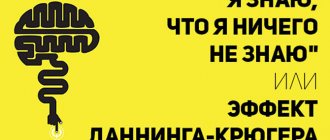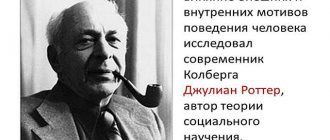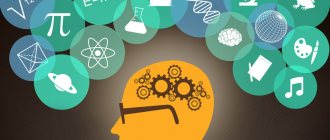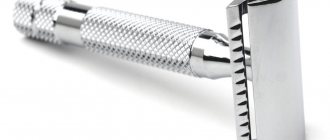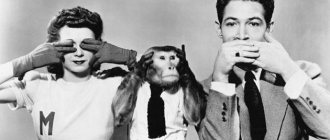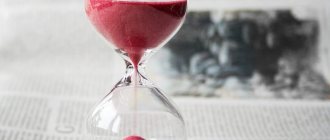Expert – psychologist Irina Guseva
The placebo effect is an effect of a treatment that is independent of the treatment itself. At the same time, the patient is surrounded by the attention of medical workers, is confident that he is receiving therapy and expects results from it. These can be tablets consisting only of sugar. Surgical operations that are limited to touching and handling. Medical devices disconnected from the network. Belief in a physician's ability may also influence perceptions of treatment. When using placebo therapy, patients often feel better than if they had received no treatment at all. In the article we will tell you what the placebo effect is in medicine and psychology, how it is used, what research there is and why it is effective.
What is the placebo effect in simple words: how it works
The term placebo effect was first coined by American military physician Henry Beecher in a 1995 article entitled “The Mighty Placebo.” He discovered it during World War II in 1944. There was no morphine at hand at the right time. Henry Beecher took extreme measures - instead of painkillers, he injected saline into the soldier’s thigh . And to his surprise, the soldier felt better.
The placebo effect is a subjective feeling of relief after taking dummy drugs, or after procedures that are unlikely to significantly affect the patient's body. What are the procedures, you ask? This can be anything that will make the patient believe in the effectiveness of the therapy, from talking with the doctor to reading a spell.
In simple terms, the placebo effect is a situation where a person gets better if he is sure that he is really being treated.
How does he work? The placebo effect is based on suggestion and self-hypnosis. Under its influence, a number of neurophysiological mechanisms are activated, which cause an improvement in the patient’s well-being. These same mechanisms (endocannabinoid, endorphin, dopaminergic systems) are activated during laughter or sex.
A placebo rarely cures a disease, but it can improve the patient's condition or eliminate symptoms.
Noncebo or the other side of the coin
A dummy passed off as medicine can not only improve the patient’s condition, but also worsen it. In medicine this is called the noncebo effect. Here are some interesting facts about it:
- The two groups of subjects were given different information about WiFi radiation. Some were told that it was completely safe, others were told how scary and harmful it was. The negative people were then exposed to 15 minutes of fake WiFi exposure (in reality, no exposure was given). All participants in the experiment became so ill that it had to be interrupted.
- In patients who expect pain to increase when taking any medication, it inevitably increases.
- Observations indicate that rude and inattentive staff enhance the negative effects of medications.
- In informed people who carefully read the instructions for medications, the frequency of adverse events from taking them appears 3 times more often than in those who have not heard about these same phenomena. Every experienced doctor tries to describe the side effects of the drug to the patient as little as possible in order to avoid the noncebo effect.
- Medical secrets or white lies are also associated with noncebo. Modern doctors in many countries of the world are prohibited from hiding anything from a patient at the legislative level, but here is one historical fact.
The famous Russian surgeon Pirogov diagnosed himself with throat cancer. At the level of medicine at that time, this was a death sentence. Pirogov fell into a terrible depression, locked himself in his country estate and simply began to “waste away.” Friends persuaded the sick doctor to consult with the luminary of world medicine, the German surgeon Theodor Billroth (believe me, this name is still known to every doctor). Billroth stated that the tumor was benign, although he probably knew that it was not. The German's authority was so high that Pirogov believed that he did not have cancer, got rid of depression, and led a normal life for a year before his death.
Why placebos work: reasons
- Expectation of improvement, psychological placebo effect. Everything is simple here: if a person expects to get an effect from treatment, then he gets it. The doctor may be too convincing, backing everything up with a bunch of procedures. Whether you like it or not, you will believe in the effectiveness of the treatment. But a placebo cannot always help ; objective indicators , for example, blood sugar levels, will remain at the same level . A person can feel some kind of relief, but only through faith.
- Conditioned reflex. In Pavlov's dogs, the bell causes drooling even if there is no food. For a placebo, such a call is pills, a doctor, a white coat, injections, etc. Over the course of his life, a person gets used to the fact that after taking pills, powder, or giving an injection, he feels better. Due to the reflex, the pacifier causes the same sensations. Types of placebos can affect people differently.
- Natural recovery. The body can cope with the disease on its own, which may coincide with the period of taking real medications or dummies, which is why patients and doctors may be confused.
Which placebo is more effective and what affects it?
| The placebo effect depends on the form of release. Injection is the most effective form. Next comes the capsule and finishing the top three is a regular tablet. | What about sizes? You may not be surprised, but a large placebo pill has a greater effect than a small one. | With the dosage, everything is also logical; if a person takes two placebo tablets, the effect will be stronger than that of someone who was given one tablet. |
| Taking two placebo tablets at once is more effective than taking one twice a day. | Even color matters . Blue placebos will have a stronger effect as a sedative, and yellow placebos will work better as an antidepressant. | Let's not forget about the brand and price . An expensive and well-known drug will get you back on your feet faster than a cheap and unknown analogue. |
How it works
Nobody really knows how it works. Many researchers have tried to unravel the secret of this phenomenon; each group has established its own mechanism of placebo action, but there is still no complete picture. In brain scans of patients who take a placebo, experts see that areas that can control pain and stress are activated, so the effect most often occurs when people experience:
- painful sensations
- nausea
- fatigue
- depression
Scientific research has revealed a number of very interesting patterns in this effect.
- The size, shape and number of tablets matter. Two tablets of starch or chalk work better than one; A large tablet is more effective than a small one, a bitter medicine is more effective than a sweet one.
- The type of tablet is very important. For depression, yellow pills help better than red ones, and when treating anxiety, green pills are more effective. A placebo in bright packaging is more effective than in a modest and inconspicuous one. A pill with something written on it is more effective than an absolutely pure one.
- National and cultural characteristics matter. Residents of the USA and Russia consider injections and droppers more effective, while Europeans respond better to placebo capsules than to injections.
- Placebos are most effective in treating depression. Recent studies have shown that placebos are very effective in treating depression, and their effectiveness is quite comparable to chemical antidepressants. True, the results of these studies are refuted by the pharmaceutical cartels, as they threaten their profits; up to 40% of US residents take antidepressants constantly or periodically.
- A placebo can make a person intoxicated. In one study, a group of subjects were given lime tonic water, claiming it was vodka. All developed impaired judgment, decreased reaction speed, and decreased IQ.
- An expensive or scarce medicine works better than a cheap and accessible one.
- Placebos have a much stronger effect on children than on adults. Moreover, every parent used it at least once. “Let me kiss you and everything will pass.”
- Placebos may cause addiction and withdrawal symptoms.
- It is important who prescribes the drug - a drug prescribed by a well-known professor is more effective than one prescribed by an ordinary doctor.
- A placebo works even when the patient knows he is taking a pacifier. At the Johns Hopkins University School of Medicine, a group of subjects with pathological anxiety were given anti-anxiety pills, and they were frankly told that it was sugar.
Of the 15 patients, 14 noted an improvement. It turns out that the subjects themselves decided that they were being deceived and “there was probably something in the pills.” In many studies, the placebo group was told at the end of the experiment that they were receiving chalk or starch, but contrary to scientists' expectations, the positive effects of taking them did not disappear. Moreover, some participants in the experiment want to take such “drugs” further. “The main thing is what helps me.”
For what purposes is placebo used: examples
It would be strange if people did not use the healing bonus from the body in their lives. Where is the placebo effect used and when is it appropriate?
In pharmacotherapy
Treating a person with a placebo in medicine is considered unethical . After all, prescribing to a patient any drugs that have nothing in common with drugs in the usual sense is deception.
According to recommendations from international and national organizations, physicians should not use placebos as part of therapy. Especially for the treatment of serious diseases, such as autoimmune, infectious and oncological diseases.
Oxford and Southampton University conducted a joint study in which they found that 97% of British doctors had given a placebo to patients at least once in their medical practice.
Despite the absence of indications indicating the need to use a placebo, doctors sometimes prescribe a dummy drug to a certain circle of patients. For example, to check whether drug treatment is required or whether psychotherapy will be sufficient.
This technique is especially relevant for suggestible people, hypochondriacs (people who are overly concerned about their health) or for people with anxiety disorders.
This way you can avoid the use of various medications . By the way, homeopathy is based on the same placebo effect.
Interesting Obecalp tablets are produced in the USA (just read the name backwards to understand how the medicine works). The tablets consist of sugar and are given to children to “cure laziness.”
The placebo effect works best for psychosomatic illnesses. It activates neurological and mental mechanisms, thereby increasing the activity of the prefrontal cortex, nucleus accumbens and pleasure center.
The work of these areas contributes to the production of substances that reduce anxiety and fear, as well as have a relaxing effect. A positive emotional state can help a person recover, but does not guarantee it.
Placebos are also used to relieve pain when the desired drug is not available. Well, placebos can also be used unknowingly, for example, if the doctor thinks that the drug is effective, but in fact it does not work.
In narcology
The placebo effect is also used in addiction medicine. Coding and stitching exploit the placebo effect.
The authority and confidence of the doctor, supported by tablets, ampoules and various procedures, help a person to believe in the effectiveness of treatment. Ignorance and lack of education also play a major role in addiction treatment.
At the end of therapy, the patient is sure that if he abuses alcohol or drugs again, he will die.
In order to convince the patient of the effectiveness of treatment and instill fear in him, the doctor uses a variety of methods during therapy.
In addition to pills, ampoules and hypnosis, a contract can be used, according to which the patient bears all responsibility for a possible breakdown. Simulated surgeries are also often used to mislead patients.
During the procedure, the doctor may use a method based on provocation . A solution of nicotinic acid or magnesium sulfate is injected intravenously, and they, in turn, cause fever and suffocation. Then the patient drinks alcohol, and it begins to seem to him that the fever and suffocation are caused by alcohol. What do we get as a result? The fear of death intensifies.
In clinical trials
Why else do you need a placebo? Most often it is used in clinical trials as a control drug, that is, to test the effectiveness of new drugs . New drugs that pharmaceutical companies create should work better than placebos. How are the tests carried out?
The subjects are divided into two groups: the first group is given an experimental drug, the other group is given a placebo. The health status of the first group must not only improve, but be significantly better than that of the second, in order for the drug to be considered therapeutic. That is, if a medicine shows itself to be worse or not much better than a placebo, then it is sent for revision.
A clinical trial is called “blind, placebo-controlled” if only the attending physician knows who is receiving what.
But the most reliable is considered to be a “double-blind, placebo-controlled study . Its essence is that neither the staff nor the subjects know who receives the placebo and who receives the drug. It is considered the most reliable, since the doctor will be more convincing, plus the doctor will not be able to accidentally reveal the secret to the patient through facial expressions or gestures.
All these studies can also be randomized , that is, patients are randomly selected into groups.
Recently, there have been increasing proposals for placebo-controlled studies to include three groups . The first two would receive a placebo and an experimental drug, while the third would receive nothing. What is it for? To separate the placebo effect from the real effect (self-healing of the body) and other unaccounted factors.
Placebo control and ethical issues
Since the 1970s, placebo control has been a mandatory procedure in clinical trials of any drug. Moreover, control should be either:
- double-blind - two groups of patients receive the drug being tested, but one group takes the drug and the other thinks it is taking the drug, or
- double blinding is when neither the doctor conducting the study nor the patients themselves know who is in which group. After all, a placebo affects not only the patient, but also the doctor who prescribes it.
The moral side of this rule has been discussed a lot lately. How ethical is it to give a sick person a pacifier instead of medicine? Therefore, most clinical trials are now comparative, that is, a new drug is compared not with dummies, but with another known drug.
The placebo effect can manifest itself in sports and creativity: examples
What else is placebo used for? Every year, more and more new studies appear that indicate that the placebo effect can affect different areas. For example, it improves cognitive and creative abilities, increases endurance.
Incredible Endurance
Sometimes you don’t even need to accept anything , it’s enough just to convince a person of his unique abilities. Scientists from Stanford have proven this. As usual, the subjects were divided into two groups, and each was tested for the gene responsible for endurance, CREB1.
The participants in the experiment were not informed about the results, then the groups were mixed among themselves. One group was told that nature had endowed them with unique endurance, the other group was told that the sport was not for them. All subjects were sent on treadmills. What came of it?
And the result is this: those who were told about incredible endurance ran further and faster (compared to the results before the experiment), regardless of actual genetics.
Creativity and smell
Another example of the placebo effect. To experiment on creativity, researchers used a placebo in the form of an odor . The beginning of the study does not change: participants were divided into two groups. Only this time both groups were exposed to the same odor.
The first group was told that the smell they inhaled increased creativity, the second group was not told anything. People from the first group showed higher results in tests compared to previous results.
Nocebo: what is it?
The opposite of placebo. From Latin, nocebo means to harm, and placebo means to please.
This is a phenomenon when people voluntarily believe and are convinced that bad events, negative signs, damage, conspiracies, witchcraft can influence them and cause harm. This is the other side of suggestibility. The person sincerely believes that the curse can kill him. But another important factor is the impact on the victim of public opinion, especially those close to him, who are also convinced of the sad outcome. Such a person will literally dry up before our eyes. Even if there are no real physical indications. The body simply turns on the self-destruction program. Can you imagine?
That is. It all starts with our thoughts. From our faith in what is happening. We are capable of both killing ourselves and curing ourselves of the most terrible diseases if we sincerely believe in it. Just by the power of thought. This is incredible!
In Japan, an experiment was conducted: children with a pronounced allergy to poison ivy leaves were rubbed with this plant on one hand, but they were told that these were ordinary sakura leaves. And they rubbed their other hand with sakura leaves, but they said it was poison ivy. And 11 out of 13 children did not even have a hint of an allergic rash. Moreover, a rash appeared on the hand that was rubbed with harmless sakura. Just think about it. By the dictates of thought, we are able to create problems for ourselves.
But what about real life? And how many of these negative beliefs spread to the masses?
A simple example: autumn is the season of colds. People already automatically believe that in the fall their immunity decreases and resistance to the disease will be low. This is the nocebo effect in action. And belief in miraculous antiviral drugs is an example of a placebo. Well, or an example: you believe in the evil eye, and no matter how you try to “defend yourself,” troubles still overtake you.
What are we talking about? Let's stop blindly believing that someone or something can harm us. Let’s take control of our lives into our own hands and change our reality with our own beliefs.
Does the placebo effect occur in animals?
Think the placebo effect only affects people? Then you are mistaken, animals are also susceptible to it, at least dogs.
A study was conducted involving dogs with epilepsy. They, just like people, were divided into two groups: the control group received the medicine, the experimental group was given a placebo.
Scientists found that 79% of dogs in the experimental group showed improvements. Scientists have three theories to explain why the placebo worked.
- Owners' expectations. The confidence of the owners that the treatment will have a positive effect is transferred to their pets.
- Animal expectations. Everything here is based on a conditioned reflex. If the animal has already had to take any medications before, then it knows that after taking them the condition will improve.
- Epilepsy manifests itself in cycles. The dogs in the experimental group are at the peak of the disease, so it is likely that the disease will subside for a short time and the symptoms will decrease.
List of drugs considered placebo
The list of drugs, oh, is quite long. According to the Russian Academy of Medical Sciences, about a third of the drugs on the modern pharmacological market are dummies. Many of them are expensive and popular with both doctors and patients.
- Medicines to improve blood circulation and microcirculation - Actovegin, Cerebrolysin, solcoseryl;
- Immunomodulatory drugs;
- “Heart” drugs - ATP, cocarboxylase, riboxin;
- Probiotics and prebiotics (Linex, Bifidumbacterin, Bifidok, Hilak Forte and others);
- Means for improving cerebral circulation - piracetam, nootropil, tenoten, phenibut, pantogam, aminalon, tanakan, preductal;
- Validol;
- Mildronate, mexidol;
- Bioparox;
- Polyoxidonium, influenpol, gromecin;
- Chondroprotectors – chondrosamine, glucosamine, chondroitin;
- Valocordin, Valoserdin, Corvalol, Novopassit;
- The antithrombotic drug thrombovasim;
- Essentiale N, mezim forte.
See also on the blog: How to take pills correctly: what to drink with, what to combine with
Who is more susceptible to the placebo effect?
It all depends either on certain personality traits or on genetics . Let's start with genetics.
- Several studies have been conducted on people with certain diseases. form of the 5-HTTLPR gene are most sensitive to the placebo effect . This was confirmed by researchers from Harvard, who found that the potency of a placebo depends on the shape of the gene encoding an enzyme that is involved in the breakdown of dopamine.
- Several studies suggest that personality traits also play an important role. Thus, the painkiller placebo has a greater effect on optimists, and on pessimists in a stressful situation.
- Cultural factors that shape personality traits also have a certain influence, so people from different countries with different diseases are differently susceptible to the placebo effect. For example, ulcer sufferers from Germany are more sensitive to placebo than people with the same diagnosis from Brazil.
And finally, we can highlight a few more people for whom placebos help better than others. As has already been written, the effectiveness of placebos depends on suggestibility, so pacifiers have the greatest effect on:
- insecure people with low self-esteem;
- weak-willed people;
- people with a weak or fragile psyche, this includes the elderly and children.
External factors that enhance the effect of empty tablets
The placebo effect is effective if the object of suggestion seems more attractive to the patient. For example, the effectiveness is affected by the color of the tablets, the colorfulness of the packaging, and the number of capsules taken. One tablet seems less potent than two, and the bright color is more acceptable. Suggestion is influenced by the reputation of the clinic and the attending physician. If therapy is prescribed by a famous doctor, professor, or honored specialist, then the effectiveness of therapy will be significantly higher. The same applies to the reputation of a pharmacological company, the cost of drugs - the higher the price, the more effective the therapy.
The placebo effect can work even if you know it's happening
It is logical to assume that for effective treatment you should not tell the patient that he will be treated with useless pills. Is it so?
There is some logic to this, but it turns out that placebos work even if the patient is aware of the composition of the medicine being taken.
This is proven by a study conducted at Harvard University. Participants in the experiment suffered from migraines. They were divided into three groups, one of which was given a drug for migraines, the second group received nothing, and the third received a placebo, only in this case there was information about this on the packaging.
At the end of the study, the researchers found that the placebo reduced migraine pain as effectively as the real medicine.
The head of the placebo research program at Harvard Medical School, Ted Kaptchuk, argues that the healing power is the process itself , that is, unpacking the medicine, taking the pill.
Even if a person knows that this is a pacifier, on a subconscious level the ritual of taking the drug is associated with a healing effect.
The appearance of the pill and the process of taking it makes the brain think that the drug will help the body heal.
Practice using placebos
Doctors around the world use placebos for clinical purposes because of their effects on a range of diseases. A 2008 Danish study found that 48 percent of doctors had prescribed placebos at least 10 times in the past year. Most often these were antibiotics for viral diseases and vitamins for fatigue.
A similar survey of doctors in Israel found that 60% of them prescribed placebos to discourage patients who wanted unnecessary drugs or if the patient “needed reassurance.”
Interesting facts about the placebo effect
- A placebo can cause side effects characteristic of the drug under the guise of which the dummy is served;
- People taking dummy pills may become addicted . Even healthy people who have stopped taking placebo may experience withdrawal symptoms: the patient’s condition begins to deteriorate;
- about 50% of doctors prescribe medications to their patients that will not bring benefit, relying on the placebo effect;
- the placebo effect can be recorded by positron emission tomography of the brain;
- children are more susceptible to drugs that do not have medicinal properties;
- The mechanism of action of placebo has not been fully studied.
Healing by prayer
Cases of miraculous deliverance from the most incurable ailments with the help of religious artifacts or special prayers are known to almost everyone. Many serious scientists have tried to establish the essence of the effect of prayer on a person. They explain its effect by an altered state of consciousness, bioresonance and other abstruse things, but most likely belief in the power of prayer is the same placebo effect.
In fact, in the placebo effect, it doesn’t matter WHAT to believe in - in a green pill or kissing a healing icon, the main thing is to BELIEVE that it will help.
But noncebo also exists in the religious aspect. A typical example of this is “voodoo death.” In Africa, the authority of a tribal shaman is so high that the curse he sends on a guilty tribesman leads to his death. It’s just that a person who has been cursed is so frightened and awaits death that it almost inevitably overtakes him.
Classification
There are the following types of placebo effect:
- Positive (therapeutic) - when the patient has ideas about the positive therapeutic effect of the drug - then they are realized.
- Negative – if the patient has a strong opinion regarding side effects. And this is also being implemented.
On the other hand, we can talk about
- “passive placebo”, which is a “dummy” and has no effect on a person. Sugar balls in homeopathy are a vivid example of a passive placebo, which almost everyone has encountered in life;
- “active placebo”, when the composition of the so-called. “drugs” include certain active chemicals. For example, “ascorbic acid,” known to everyone from childhood, is nothing more than an active placebo.
Interesting fact from history
The example of the famous Russian therapist of the 19th century M. Ya. Mudrov entered the history of medicine. The doctor used special powders to treat his patients. M. Ya. Mudrov gave these powders the names: “golden”, “silver” and “simple”, in accordance with the color of the paper from which the bags for the powder were made. Mudrova's multi-colored powders produced a miraculous effect on patients, curing many diseases. As it turned out later, after the doctor’s death, the bags contained ordinary chalk powder. But the patients’ faith in the healing power of the “medicine,” supported by the doctor’s authority, helped them recover from certain ailments.
Touching upon the topic of a doctor’s authority, I would like to say that for a patient, any medicine taken from the hands of a doctor he respects will almost certainly produce a positive healing effect. That is, authority itself has a therapeutic effect similar to the placebo effect.
Psychological factor as a placebo
Science has already proven that “fake” pills (injections), contrary to common sense, still have a therapeutic effect. But in addition to the “material means” of healing (pills), there is also a psychological type of placebo. This type of placebo was wonderfully described by O. Henry in the story “The Last Leaf.” This is the story of a young girl, an artist, who suffered from a severe form of pneumonia. The attending physician promised her a one in ten chance of recovery, and then only if she had a very strong desire to become healthy. After talking with the doctor, the girl, who had lost all hope of recovery, convinced herself that she would die only when the last leaf fell from the tree outside her window. Autumn came, there were fewer and fewer leaves on the tree, and in the end there was only one leaf left. But even a strong wind could not tear it from the tree. Outside the window there was a painting of a tree and one leaf on it, drawn by an old man next door. And a miracle happened: having become convinced of the indestructible “resilience” of the last sheet, the girl believed in her strength and recovered.
